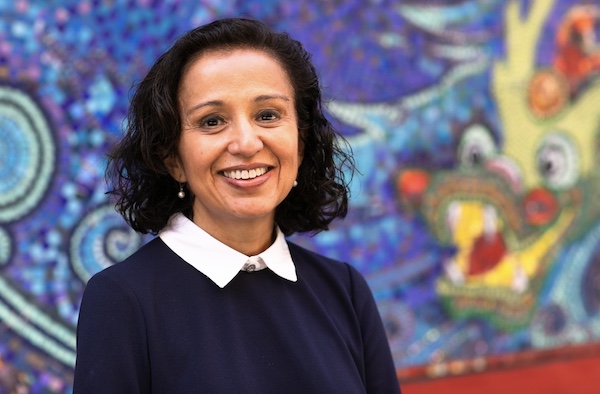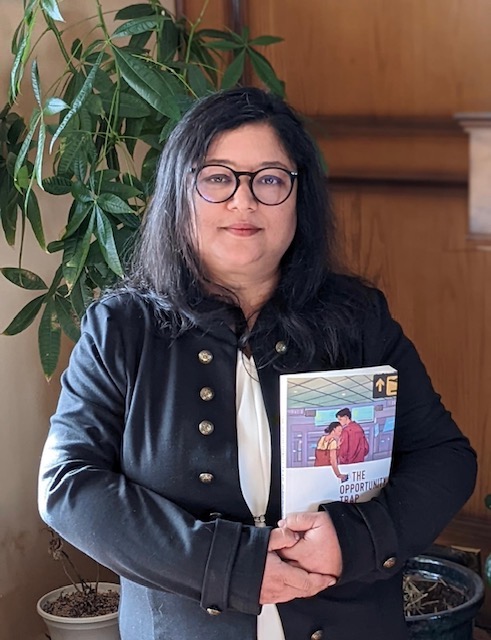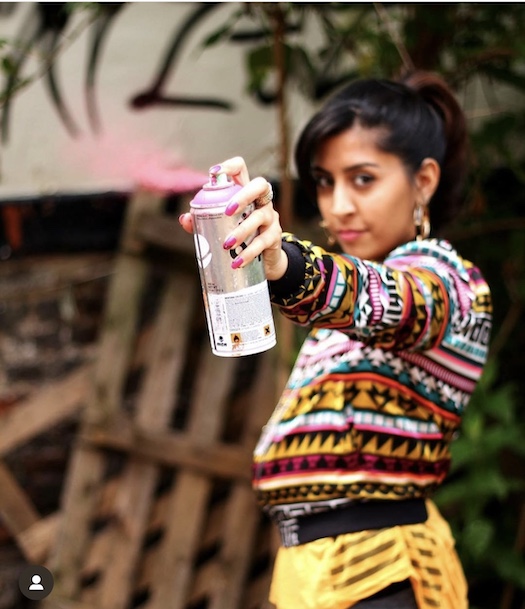Beyond the Opportunity Trap: Are Successful Indian Women in America Mere Outliers?
- Meet the women and changemakers who have had the gumption to debunk the model minority myth and look beyond its lauded euphoria.

Women of Indian heritage have forayed into influential realms in the United States. They made their presence felt early on in academia. Scholars like Gayatri Chakravorty Spivak and Chandra Talpade Mohanty are well-known worldwide. In business, Indians today take pride in the success of trailblazers like Indra Nooyi and Jayshree Ullal. In American politics, Kamala Harris, Pramila Jayapal, and more recently, Aruna Miller have become well-recognized names. In STEM, scientists like Madhulika Guhathakurta and Kamakshi Sivaramakrishnan have made their presence felt. Their rise and success are a cause for celebration, but what if they are only the outliers? How are the other women of Indian origin faring in the U.S.? Are they shining like they are expected to, as a part of the ‘model minority’?
On the occasion of International Women’s Day (IWD) this year, I reached out to three Indian women and changemakers who have had the gumption to debunk the model minority myth and look beyond its lauded euphoria.
I asked educator and community advocate, Manjusha Kulkarni, how she felt about the IWD theme this year, #EmbraceEquity. Kulkarni has been a public crusader for the last two decades and has been recognized by TIME magazine as one of the 100 most influential individuals and by Bloomberg as one of the 50 individuals “with the ability to move markets or shape ideas and policies.” A leading voice in the effort to identify and oppose hate crimes against Asian Americans and Pacific Islanders, she said, “We renamed Asian Pacific Policy and Planning Council (A3PCON) as AAPI Equity Alliance in December of 2020 because we feel very strongly about ‘Equity’.” She is the executive director of AAPI Equity Alliance which has raised $165 million to address the needs of AAPI women across the globe.

When Kulkarni was in the 5th grade she had seen her physician mother getting discriminated against by a group of white male physicians in Montgomery, AL. Her mother had filed a lawsuit and won the case in the 1980s. “This convinced me that law can provide redress and challenge unfair practices,” she said. She became an attorney and dedicated her career to advancing the health, empowerment, and solidarity of persons of South Asian origin.
When asked what she feels about the state of Indian women in the U.S. she replied, “The women in Indian communities in the U.S. are often still siloed by religion, ethnicity, and caste. They need to work together to achieve self-actualization.” Though she acknowledges that now more organizations cater to the needs of Indian women.
There are now nearly two dozen anti-violence-against-women agencies working across the U.S., offering myriad services to the Indian community. Kulkarni mentioned one such organization, Raksha, led by Aparna Bhattacharya in Atlanta. She also added that now more women of Indian origin are leading social justice initiatives, like Vanita Gupta and Nisha Ramachandran. “As the kids of 1965 immigrants grew up, there has been a greater opening of minds and now we see more effort put into protecting women.”
She brought up some issues plaguing Indian women in the US.
“As the director of South Asian Network (SAN) I have seen women open up about domestic violence, reproductive health, and immigration issues that affect their lives negatively,” she said.
Immigration has placed Indian women in paradoxical situations. They have gained an unprecedented sense of freedom from “restrictions of joint families and strict patriarchal diktat,” point out Shamita Das Dasgupta and Sujata Warrier in a chapter in ‘Kamala Harris and the Rise of Indian Americans’ edited by Tarun Basu. “Yet they found themselves socially isolated and lonely at home and without appropriate models at work.”
Kulkarni believes that it is because of the model minority myth that there isn’t an integrated discussion on the plight of men and women who are suffering because of immigration policies.

That’s why Pallavi Banerjee’s seminal book, “The Opportunity Trap” is so important. Published last year, the book is based on Banerjee’s Ph.D. research that examines the impact of H-4 dependent visa programs on Indian immigrant families. She was surprised by the lack of research material in the field when she first started her Ph.D. in Chicago back in 2005. “The reason there is so little research on H-4 visa holders is that these families are seen as privileged owing to the fact this is high-skilled temporary workers we are talking about. However, as my book shows it’s important to pay attention to the entire spectrum of those affected by U.S.’ imperial, gendered, and racialized immigration policies if we want to find any possibilities for solidarity to demand change.”

Banerjee, who is an associate professor of sociology at Calgary University and directs the Critical Gender, Intersectionality and Migration Research Group, found that though the visa policies legally appear gender and race-neutral, they have gendered and racialized ramifications for visa holders and their spouses.
In her book, she touches on the multilayered challenges faced by women on dependent visas. She writes, “The impossible ideals placed on women in a neoliberal heteropatriarchy with an internalized rhetoric of choice and engrained gendered scripts of motherhood, to be perfect mothers and perfect paid worker, I contend, make the lives of H-4 women even more oppressive.”
She also shows how the American visa regime is built on the premise that women from the Global South are universal dependents. And this also serves the U.S. well. She said, “When the imperial Western State designs a visa structure that enforces gendered dependence on immigrant families that is an example of coloniality of gender. This imposed dependence in turn benefits capitalism because spousal dependence ensures that the main migrant worker is completely dedicated to their work life given that the realm of the home falls squarely on the dependent spouse who in the public imagination is always a woman.”
Speaking on the theme of #EmbraceEquity, she said, “The ‘Opportunity Trap’ shows that the struggle for equity is a continuous process because institutions are designed to undermine equity at every level.” She asserted, “If we are to move toward an equitable world, we need to demand that lawmakers and policymakers are held accountable while simultaneously trying to make our families, our interactions, our other institutions like workplace, schools, the streets more equitable – embracing equity is a multidimensional and multilevel project and we need to be mindful of that.”
Both Banerjee and Kulkarni believe that those in the Indian community who have done well should do more than just charity, they should get involved civically and be more vocal. Only then equity can be embraced fully.
What does being vocal look like at the level of community organizing?
Born and raised in Berkeley, CA. Nisha K. Sethi is an artist whose passion lies in using art and design as tools for social change.
At sixteen she joined her high school club, Youth Together which was her first taste of organizing. She learned that she had a voice and as an artist, she played a central role as a mobilizer by creating posters. “That’s when my art took a political turn,” she said over a phone interview.

Sethi turned to hip-hop and graffiti as tools for creative freedom. The young Punjabi girl armed herself with a spray can to develop her style as a street artist. By combining Indian culture with hip-hop, she has also channeled a new style called ‘Kalakari’ through which according to her, she “is crafting art and clothing shaped by the constant process of self-reflection and decolonization.”
In 2018, she held her first solo art exhibition, “Brown Girl Resist” featuring politically-charged artworks, a display of resistance representing the voices of revolutionary women of color. It powerfully showcased South Asian and Brown women at the forefront of the social justice movement, shattering stereotypes such as the model minority myth.

“South Asian women are raised to be quiet, docile, not challenging authority, but they are strong and assertive today,” she said.
She notices a change within the Indian community and thinks that social media has made it easier for the community to connect but she believes that more participation is needed to break through boundaries. “South Asian women should stop leaning on other communities for fighting their fights and should join in actively. Educating ourselves on what is happening around us and acknowledging that there are inequalities are the first few steps.”
She believes like Kulkarni that because Brown women are considered privileged and not facing as many barriers as other women of color, they should embrace inclusion and fight for other women at home and in the workplace.
There are pushbacks within the community against this fight. The Indian mainstream community has often seen anti-violence women’s organizations as cultural traitors, airing dirty laundry in public. While charity work for the unfortunate few has been tolerated, the agenda to change the community to a more gender and class-equitable society that most such organizations promoted was viewed as “impractical and destabilizing,” mention Dasgupta and Warrier. Federation of Indian Associations (FIA) has barred groups from participating in India Day parades because they have shown solidarity for certain progressive causes including their support for the South Asian Lesbian and Gay Association.
“I have zero tolerance for such myopic pushback,” said Kulkarni. “National borders are artificial and cultures infiltrate and impact each other. To move forward with the mission of embracing equity it is important to think globally and act locally. It is important now more than ever for South Asian women in the U.S. to join the movement and become the guiding light if we want real progress.”
Sreya Sarkar is a public policy analyst based out of Boston.


